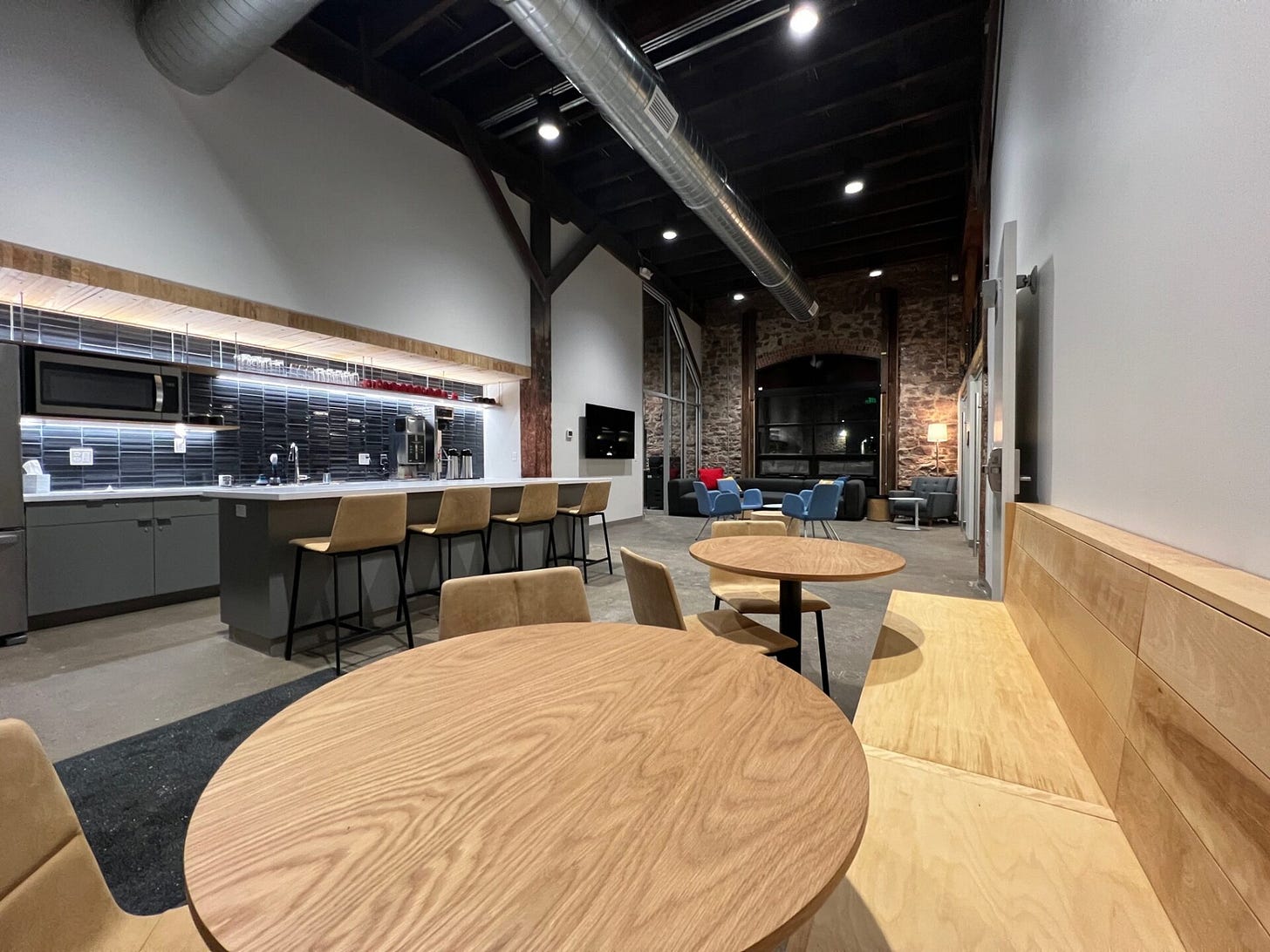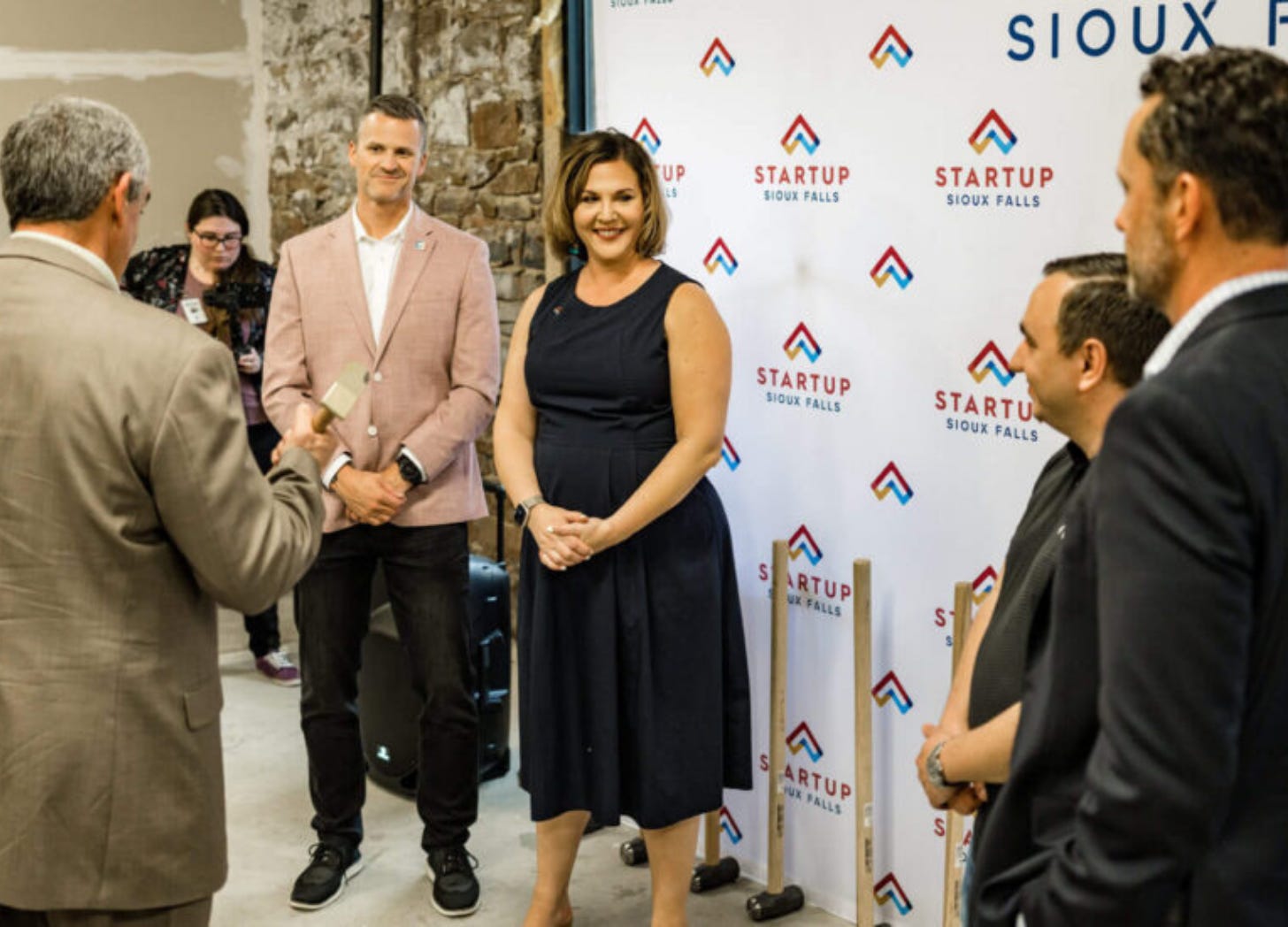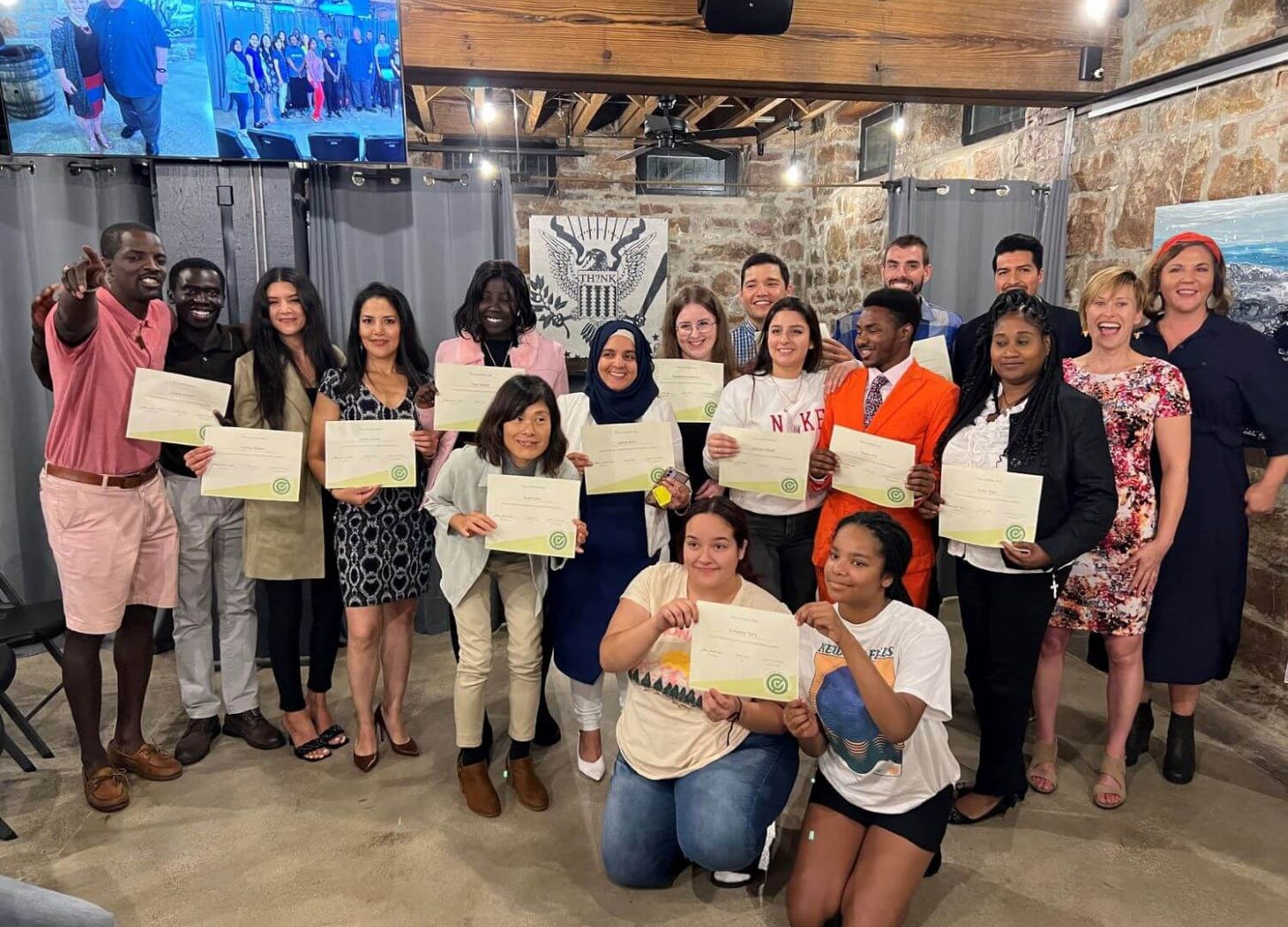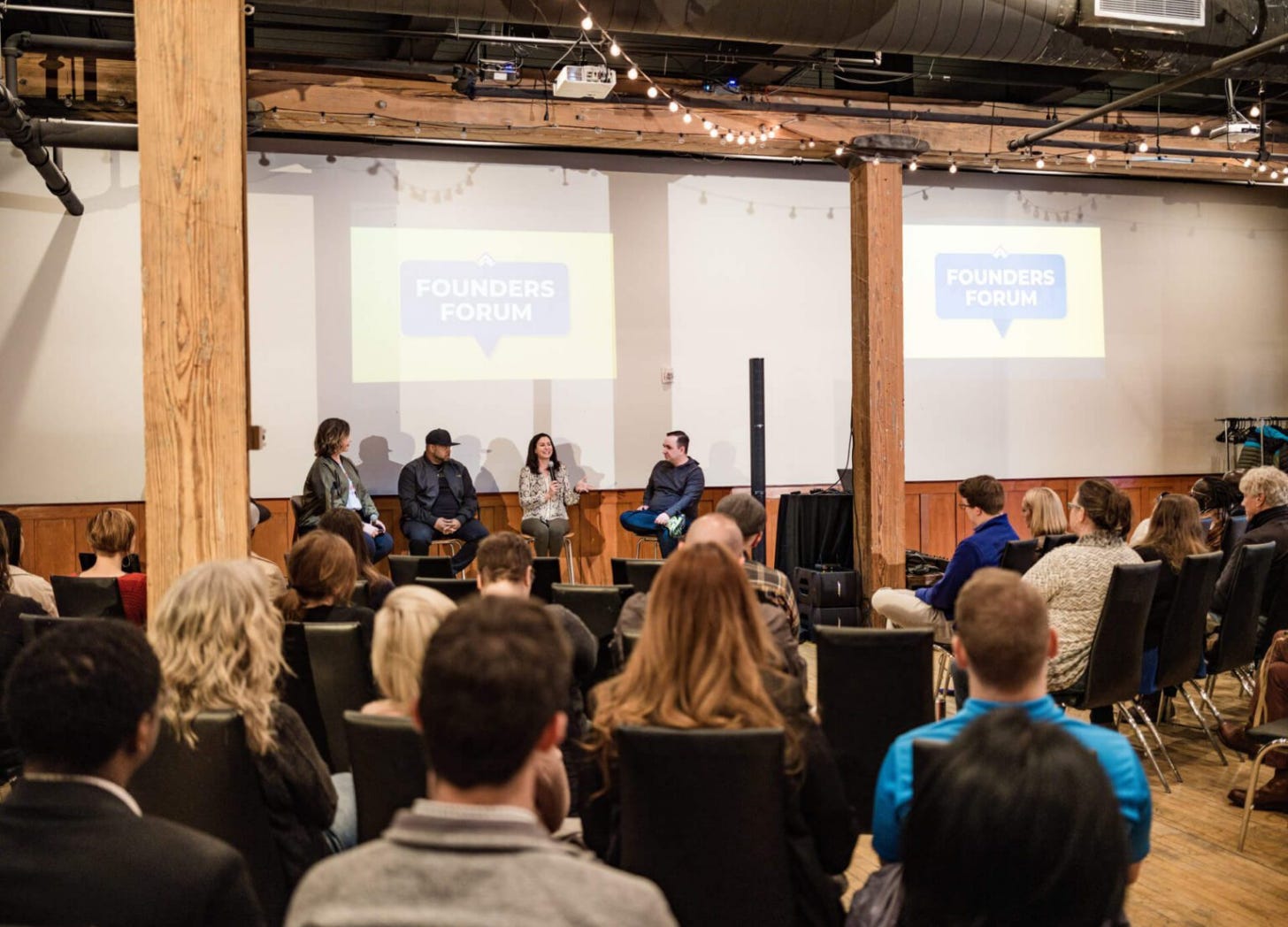
A few months ago, I felt inspired to write about a few things I have learned during my time working at Startup Sioux Falls. The fact that I felt inspired to write was a very welcome sign that my capacity for creativity was reemerging after a long hiatus.
During the month of January, our team and a group of volunteers has been working hard to get our newly renovated space in downtown Sioux Falls open. It has been over three years in the making and I am tired, relieved, excited, and proud that we made it.
In my previous career as an architect, I typically worked on large-scale buildings, including the Gage Brothers Manufacturing Plant, the Dakota State University Madison Cyber Labs, and the Minnehaha County Jail Expansion, to name a few.
The renovation of the historic city-owned Milwaukee Freight Depot for Startup Sioux Falls is one of the smallest building projects I have worked on, but one of the most challenging and complex. This fact is not simply attributable to being the owner this time.
The sheer number of community and private partners involved in moving us out of the Zeal Center and into the renovated depot is astonishing. The details are tedious, but in all, this relocation has involved meaningfully managing relationships and coordinating with over 200 organizations and individuals. This includes the city of Sioux Falls, economic development partners, resource partners, board members, former tenants, contractors, subcontractors, architects, sponsors, donors, members, and more.
It wasn’t easy and we had many difficult conversations, but the mere fact that we are opening our downtown location to members in February speaks volumes about what we can do as a community when we work together.
So, in celebration of our move, I am reposting what I wrote about community-building at Startup Sioux Falls through my personal channels. Let’s go!
You can check it out on SiouxFalls.Business here.
3 lessons learned from community-building at Startup Sioux Falls
We are in the midst of transformation as an organization at Startup Sioux Falls, and our team has been reflecting on what we have learned over the past few years of cultivating the Sioux Falls startup community. Recently, these ideas have been recurring themes during my runs — my thinking time — so I thought it was time to write them down.
Our search for a community coordinator also may have contributed to these themes being top of mind. On that front, we are thrilled to have Amos Buelow join the team as community coordinator. He has the skills and heart for this work; we are grateful he has joined the team. We will introduce him soon, but in the meantime, please say hello to him!
These lessons are just the start, but if you are part of our entrepreneurial community or building a community of your own, I hope these will spark a familiar feeling or some inspiration as you continue to build.
1. Prioritizing tone and culture
One of my mentors in design school once shared with me that his ultimate dream as a professor was to walk into the studio and read the newspaper while his students passionately discussed ideas and their projects. He was being facetious, but the analogy is relevant.
His goal was to foster an environment of trust where critical thinking was the norm — a supportive environment that challenged individuals and the collective group beyond what they thought was possible for themselves. Creating a culture like this is no small feat.
During Startup Sioux Falls’ shift from an incubation facility to an ecosystem organization, we have focused on providing consistent communications about the tangible programs and services we provide.
I believe a less tangible but equally important part of our work is to foster the tone and culture of the startup community. This is at the core of the momentum we have experienced as a startup community over the past few years.
It also is one of the more nuanced, time-consuming and difficult aspects of our work. It is in the stories we tell, the relationships we build and the spaces we create. This type of work is mostly unglorified, subtle and nuanced. It is difficult to measure, and in economic development, we measure impact.
However, quality programs and services will not make up for a culture that people don’t want to associate with. Setting tone and culture is something our president, Brienne Maner, is focused on in her leadership of Startup Sioux Falls. She also is leading the way toward building a more inclusive startup community, which takes time and intentionality.
The culture associated with startups often is one of hustling and grinding, but you may notice this language is not at the center of our branding or the way we communicate. We know many of our founders are hustling and grinding, but we believe that a thriving and innovative startup community is one with a culture of support, trust and vulnerability, not one that suggests you aren’t an entrepreneur if you get more than four hours of sleep per night.
Although there always is room for improvement — our community has asked us to talk more openly about failure, for example — it is rewarding to see founders and starters build upon the foundation we are trying to establish in how they support, mentor and collaborate with each other.
2. Don’t reinvent the wheel unless you need to
As an organization that supports entrepreneurs, we feel the pressure to be innovative ourselves. While we certainly embrace and aspire toward innovation, we have been strategic about solving problems where and when it matters most.
One of the best examples is our implementation of the CO.STARTERS business accelerator program, which we launched in 2020. Startup Sioux Falls could have developed its own business accelerator curriculum, but this would not have been the best use of our limited resources.
CO.STARTERS is a national company that specializes in providing educational curricula for communities to support starters and founders. By working with CO.STARTERS, we were able to leverage our resources and what we do best and bring facilitators, entrepreneurs, resource partners, mentors and service providers together to support the founders going through the program.
We took this one step further when we applied for and received a $1 million Community Navigator Pilot Program grant through the Small Business Administration. Instead of proposing a new program, we leveraged the traction we had with CO.STARTERS and expanded our impact through strategic partnerships and relationships. If you want to see the impact of this program, don’t miss Startup Pitch Night on Thursday, Oct. 27!
We are presented with needs, problems and ideas on a daily basis, which is why we are so intentional about keeping our mission, vision and values central to our decision-making. As a small team with many competing demands, we are forced to think carefully about what problems we solve ourselves and when we leverage partnerships.
If you find yourself in a similar position, here are a few questions we use that you may find helpful:
What resources already exist to meet this need?
Are there partners or connections we have who are solving this problem already?
Does solving this problem align with our mission, vision and values, and does it serve our target market?
If we focus our energy on this problem, what suffers?
Do we need to invent a tool, or is there a tool that already exists?
3. Aggregation over ownership
If we have met in person, you may have heard me say, “We don’t own the ecosystem.” This is not simply because we are a small team but because a thriving ecosystem isn’t owned by any one individual or organization.
I suspect this is something that community leader and entrepreneur Matt Paulson saw when he started Startup Sioux Falls in 2019. No one person or organization holds all the information or resources, so the Startup Sioux Falls online community was a space to gather information, resources and network with fellow founders.
Personally, I like to think of us as aggregators. We connect. We listen. We support. We curate. We facilitate. This is why anyone in the community can add an event to our website as long as it is relevant to entrepreneurs. This is why the rules we have in our Facebook group are what they are. Create value for others, and give before you get, for example. If you come to our table with the sole purpose of selling, you are at the wrong table.
We want individuals interested in starting a business to start with Startup Sioux Falls not because we offer all the resources but because we see ourselves as the entry point and connector of the ecosystem. If we can’t help, we know someone who can!
One of the many things we are excited about for our downtown space is that there will be even more tangible ways for founders and starters to lead within the startup community. Having a centrally located space that serves the community is going to present opportunities we likely can’t even imagine yet.
We are three short months away from moving in. There is so much incredible news to share on that front that I struggle to wrap my head around it. There also is so much to do before we open, but it is rewarding to take a moment to reflect on how far we have come as a startup community and the exciting future that awaits. And if you are wondering to yourself when membership pre-sales will be available, thanks to Amos and Barb, the answer is soon!
If you or someone you know is interested in starting with Startup Sioux Falls, start here. Also, don’t hesitate to contact us; we want to hear from our stakeholders and community of founders. We may not be able to act on everything now, but we are here to listen, and we will help make a connection and act when we can.
If you know someone who would enjoy a slice of creativity in their inbox, please share this with them and tell your friends to subscribe!
Sara







